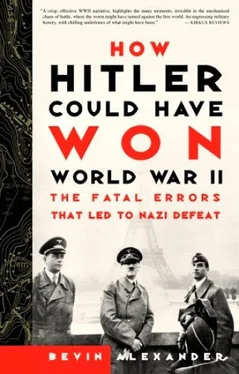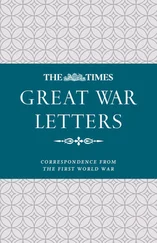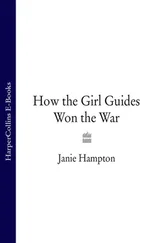But special detachments of German spies failed to grab the Maas bridges at Maastricht, and the Dutch blew them. This held up part of Erich Hoepner’s 16th Corps panzers for forty-eight hours. Then they burst across, and opened a wide path for Walther von Reichenau’s following 6th Army.
The Allied commander, General Maurice Gustave Gamelin, ordered the main Allied force on the left wing, the 1st Group of Armies under Gaston Harvé Billotte, to rush to the Dyle River. Included in this force were France’s three “light mechanized divisions” of converted cavalry with 200 tanks apiece. On the left of this army group was the British Expeditionary Force (BEF) of eight divisions under Lord Gort. The British moved to the line Louvain-Wavre south of the Belgian army, while the French swung in below the British from Wavre southward to Namur and Dinant on the Meuse. Meanwhile Gamelin directed French cavalry— motorized forces, armored cars, and horse brigades—to penetrate into the Ardennes and hold up the Germans.
Gamelin also ordered the French 7th Army under Henri Giraud to rush to Breda, about thirty miles southeast of Rotterdam, intending to link up with the Dutch. But with Fortress Holland breached, the 7th Army withdrew to Antwerp, Belgium.
To serve as a hinge around Sedan between the Maginot Line and the armies that had swept northeastward, Gamelin relied on two French armies (the 2nd and 9th) of four cavalry divisions and twelve infantry divisions, composed mostly of older reservists. This Sedan sector was the least fortified portion of the French frontier. Cavalry would be useless against tanks, and the infantry possessed few antitank or antiaircraft guns.
Meanwhile the Luftwaffe exerted all its efforts to beat down Allied air defenses and knock out enemy aircraft on the ground. The Germans were successful in large degree because the Dutch, Belgian, and French fighters were inferior to the Messerschmitt 109s, and the British Royal Air Force held back its Spitfires in England.
German bombers attacked railways, roads, and troop assembly areas. They created fear and chaos, and made the German ground advance much easier. Planes, mainly Stukas, stayed with the German advance troops, guarding flanks, knocking out defensive positions, and stopping enemy armored movements. After a week the Luftwaffe enjoyed superiority, and by another week it had achieved air supremacy.
Behind Hoepner’s panzers (3rd and 4th Divisions), the 6th Army advanced quickly, encircled the Belgian fortress of Liège, and pressed the Allies and Belgians back to Antwerp and the Dyle line. Georg Küchler’s 18th Army, which had moved into Holland, turned on Antwerp as soon as the Dutch surrendered, and seized the city on May 18. The French cavalry that had advanced into the Ardennes made little impression on the German forward elements, and withdrew behind the main Allied positions.
The French First Army, with thirteen infantry divisions and 800 tanks, had been ordered to hold at all costs the “Gembloux gap,” the twenty-two-mile space between Wavre on the Dyle and Namur on the Meuse. Unfortunately, the commander distributed his armor all along the line.
On May 14–15, German panzers struck around the town of Gembloux. Here about 150 French tanks were concentrated, more than the Germans brought up in the beginning. The French drove the German panzers back in a fierce, rolling battle. But more German tanks kept coming up, and the French, now outnumbered, withdrew on May 15, opening the flood gates to the German panzers.
The Belgians and the Allies fell back to the Scheldt River, fifteen to thirty miles west. It was beginning to look like a rout. But the German high command didn’t want to hurry the Allies into too rapid a retreat before the net had stretched across their rear. Accordingly, it took 16th Corps away to back up the drive through the Ardennes, and also withdrew Luftwaffe support.
The German successes had stunned the world. At this moment a great voice lifted to rally the Allies, inspire democratic peoples everywhere, and defy Hitler. Winston Churchill stood before the House of Commons on May 13 and said: “I have nothing to offer but blood, toil, tears, and sweat. If you ask me, what our war aim is, I give you only one answer: Victory! Victory whatever the cost!”
While the world’s attention was riveted on the spectacular battles in Belgium and Holland, the actual Schwerpunkt, or center of gravity, of the German offensive plunged almost unnoticed through the Ardennes toward the weakest point of the French line, sixty miles away. Well behind the panzers plodded the German infantry divisions on foot, their supply wagons and artillery pieces being pulled mostly by horses.
The leading element was the 19th Panzer Corps (1st, 2nd, and 10th Divisions), commanded by the father of German armored warfare, Heinz Guderian. His tanks were targeted at Sedan on the Meuse. Just to the north was Georg Hans Reinhardt’s 41st Panzer Corps with two divisions (6th and 8th), aimed at Monthermé, about fifteen miles northwest of Sedan. Each of the five panzer divisions averaged 253 tanks.
About twenty-five miles north of Reinhardt was Hermann Hoth’s 15th Panzer Corps with two divisions, the 5th and 7th (under Erwin Rommel, soon to be famous), with a total of 542 tanks. This corps’s job was to get across the Meuse at Dinant and keep the Allies in Belgium from interfering with Guderian and Reinhardt in their thrust westward.
Everything depended on speed. The Germans had to cross the Meuse before the Allies woke up to the danger. If they did, they still had time to assemble a formidable defensive line along the river and delay the offensive long enough to bring up reinforcements. If that happened, the Allies might counterattack through Army Group A and endanger Army Group B to the north, or they might hold the panzers along the Meuse and prevent the campaign of annihilation that Manstein had designed.
Guderian had to worry not only about the French but also about his own superiors. He met little resistance in the Ardennes, but near the frontier the French contested the advance firmly and held the Belgian town of Bouillon, eleven miles from Sedan, at nightfall on May 10.
General Charles Huntziger, commander of the French 2nd Army, asked the mayor of Bouillon whether one of the local hotels could be used for the wounded. “Of course not, General,” the mayor replied. “This is a summer resort, our hotels are reserved for tourists. Do you really think there is any danger?”
The next night General von Kleist, who had never commanded armor before taking over the panzer group, got a case of jitters. The higher German commanders could not believe the French had not discovered that the main point of the offensive was aimed at Sedan, and were fearful of a French counterattack on the flank. They disbelieved Guderian, who insisted the French would take days to figure out what had happened, and more days to mount a counterstroke.
During the night of May 11–12 Kleist got reports that French cavalry were advancing from Longwy, about forty miles east of Sedan. He at once ordered the 10th Panzer Division, on the south, to change direction and drive on Longwy. This would seriously upset the German advance and, Guderian argued, was unnecessary. Many of the French cavalry were still riding horses, while their lightly armored mechanized elements were no match for German panzers. Let them come, Guderian told Kleist. They will be smashed. Kleist, after some hesitation, agreed, and the French cavalry wisely did not appear.
Guderian’s 1st and 10th Panzers captured Sedan and occupied the north bank of the Meuse on the evening of May 12. Kleist ordered him to attack across the river with these formations the next day at 4 P.M.
Before the campaign started, Guderian had worked out a plan of attack by the Luftwaffe. Since few of his own artillery pieces could get to Sedan in the press of men, horses, and machines on the roads to the rear, Guderian intended to use Stukas as aerial artillery to help his infantry get across the river. He wanted a few aircraft to remain over Sedan before and during the crossing to make both actual and fake bombing and strafing runs on the French positions. Guderian was less interested in destroying the enemy than in forcing defenders to keep their heads down so his infantry could rush across the stream and find lodgment on the far side. This is what he had worked out with the Luftwaffe staff.
Читать дальше


![Джонатан Димблби - Barbarossa - How Hitler Lost the War [calibre]](/books/385421/dzhonatan-dimblbi-barbarossa-how-hitler-lost-the-w-thumb.webp)









